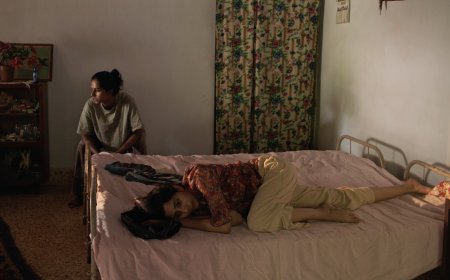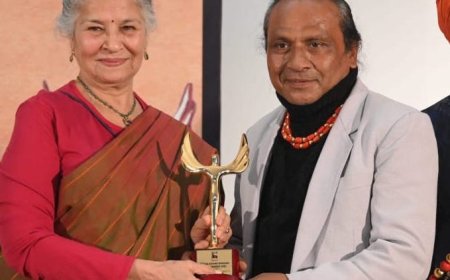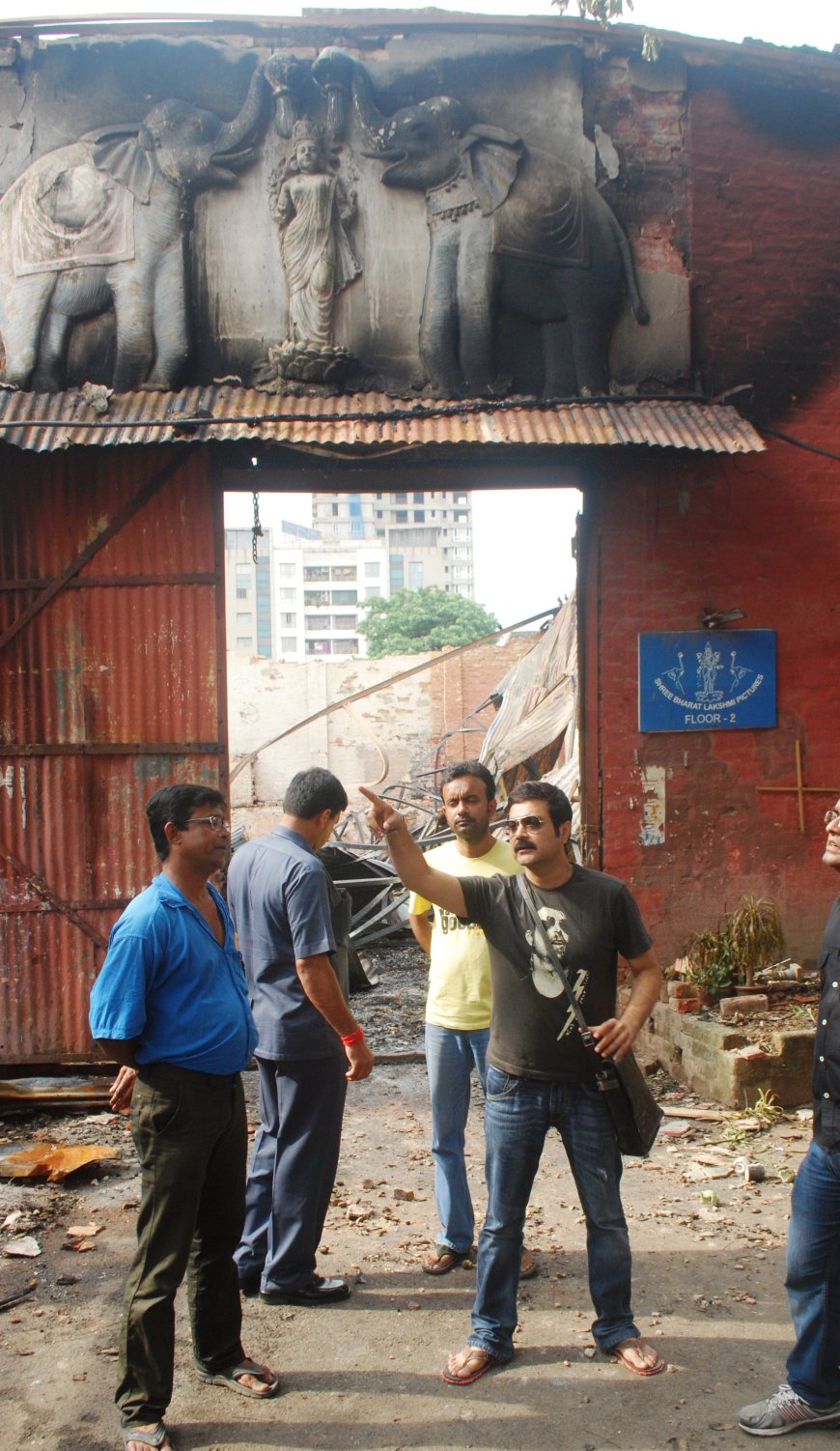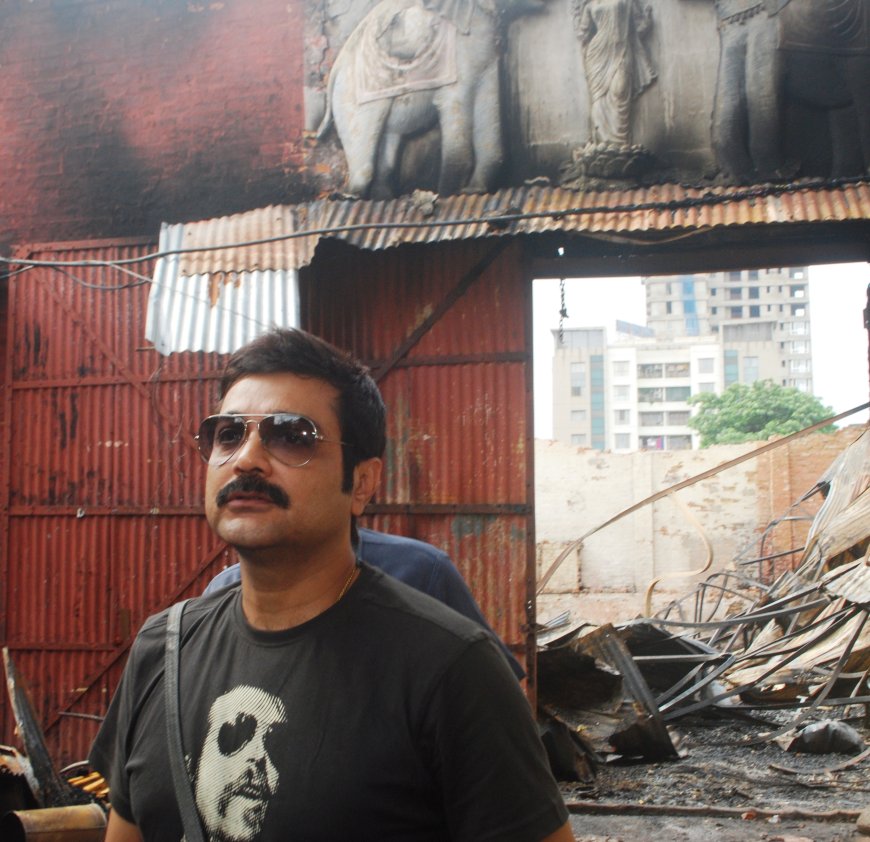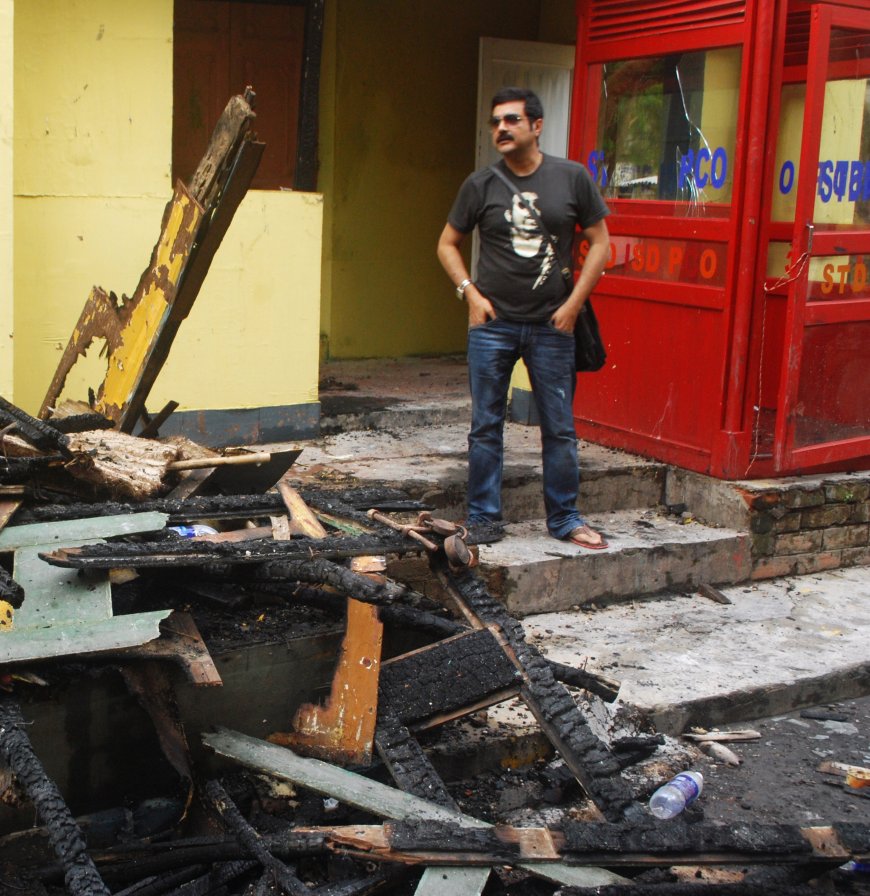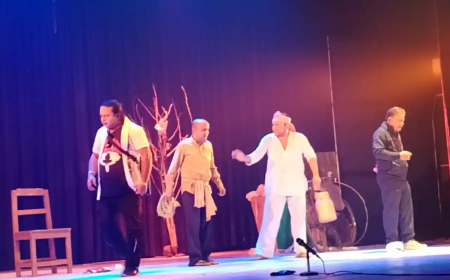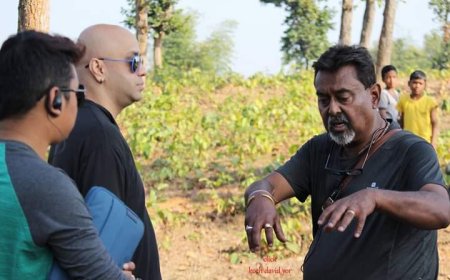REPORT: HOW SAFE ARE FILM STUDIOS IN KOLKATA? LOOKING BACK ON THE FIRE IN 2011
Dr. Shoma A. Chatterji writes a retro piece on the safety condition of Kolkata film studios in retrospective against a big fire that broke on in July 2011.
How safe are the film studios in Kolkata? This question arises in the wake of the terrible fire that engulfed two out of the four stories of Bharat Lakshmi Studio in Bengali cinema’s studio neighbourhood of Tollygunge on the 18th of July 2011. This fire drew attention to the extreme negligence of studio owners towards maintenance and application of fire prevention and fire-fighting infra-structure within the complex. The constructed, temporary sets of seven to eight mega-serials were reduced to ashes, bringing shooting to a halt.
Primary investigations by the workers of the fire department revealed that the fire that suddenly began an hour before the day’s shoot was to begin, was probably caused by a short circuit in the power supply connected to the warehouse closed from outside. The fire fanned out dangerously because the warehouse was filled with highly inflammable material like loads of files, old newspapers, floor mats made of rubber, wooden goods and synthetic material. Artifacts of old films shot in the studio floors were believed to have been completely destroyed in the flames.
The temporary set structures were made of mesonite and plywood while polythene sheets stretched as protection from rain leading to tremendous heat building up that made the fire spread so quickly. The thick iron beam that was the roof collapsed in the fire. Debashish Roy, D.G. (Buildings) of KMC had ordered a forensic investigation to find out the cause of the fire. But Jyoti Chokhani, one of the two owners said, “We have 50 fire extinguishers and all of them were active. Floor Number Two from which the fire is suspected to have originated, was closed from outside. The fire was noticed at least 30 minutes after it broke out.”
The fire department did not agree. A state fire and emergency department official insisted that the studio lacked adequate fire-prevention measures. A complaint against the studio owners was lodged, informed the official. One of the compound walls divides the studio from the Hoglapara bastee. The first thing the firefighters did was to disconnect the wires extending from the meter box on the wall from the power supply. Three men from the bastee were injured while trying to save their homes from the fire. One of them, Nasoor Ali was critically injured. The Mayor announced relief of Rs.10,000 to Nasoor Ali and Rs.5000 each to Sheikh Tuna and Sheikh Kasem. Mohammed Azmi, Sheikh Suban, Anwara Bibi and Mukhtar Ali’s homes burnt down completely. The Mayor announced a compensation package of Rs.10,000 for each of them.
The fear of fire in other Kolkata studios:
This fire evokes memories of a similar fire on March 14, 2000 when an entire floor of the Government-owned Technicians Studio One, a bit distanced from Bharat Lakshmi, lost its floor number four. Technicians’ Studio One is the biggest among the three studios owned by the West Bengal Government. Six years later, the State Government decided to bring in private partners to jointly begin a programme of restoration and repairing of the studio. Private organizations were invited in July the same year to send in their applications. Three organizations picked up the forms but only one submitted the application. The State Government signed a contract with this organization on October 16. The organization agreed to support the government with a sum of Rs. 4 crores over a period of ten years in exchange for a 99-year lease being granted to the firm.
Before the deal was signed, cine technicians unions and actors’ unions raised a hue and cry about the part-privatization of the studio forcing the State Government to rescind its decision. The State government then handed over the responsibility to the Kolkata Metropolitan Development Corporation (KMDA). The KMDA sent a proposal to the Kolkata Municipal Corporation on November 9, 2010 for modernization and improvisation of Technicians Studio Number One that included various packages including fire-prevention and fire-fighting equipment.
Studio fire adds to the scarcity of studios for film and television shootings in the industry. The demand for shooting floors has increased while the supply stands threatened by such disasters. Bharat Lakshmi is one of the few functioning non-governmental studios supporting the film industry in West Bengal. The studio had three or four shooting floors but actual shooting took place on seven floors. Indrapuri Studio has four floors while New Theatres has two big floors. Another studio, Calcutta Movietone that was closed for many years, began functioning recently with two floors. A closed factory near Regent Park has been converted into a studio. But that hardly meets the demand.”
The studios have never bothered with accident or fire insurance. There are no preventive provisions ready to be put in action if and when the need arises. Fire prevention and fire fighting strategies are conspicuous by their absence. While producers keep investing in production values by taking their teams for location shoots to Switzerland, Italy, UK and USA, no one seems to bother about the precarious conditions of the studios back home.
“For actors and technicians, these studio floors are like temples where our gods reside. When such temples are razed to the ground through sheer negligence, it hurts us deeply,” said top actor Prosenjeet who arrived at the complex soon after he heard of the fire in 2011 from his colleagues in the industry. The North Kolkata streets set constructed for Buddhadeb Dasgupta’s film Kaalpurush starring Mithun Chakraborty and Rahul Bose stood for months together on one corner of the Bharat Lakshmi Studio.
“It is heartening to find money flowing into the Bengali film industry over the past six or seven years. But absolutely no attention has been paid to the terrible conditions in which we do interior shooting in the studio floors. We, the people in the industry, are not behaving in a responsible manner to avoid such incidents. As producer, I see that all my serials are fully insured against any accident or calamity taking place during the shooting. But few other producers are following this precept. The studio owners simply do not care about improving the work environment by providing even the minimum like a fire alarm. We, the producers, directors, actors and technicians had once decided to boycott some of the major studios that lacked the basic framework. But we did not stick to our own promise. Whenever a work was commissioned, we forgot all about it and went right back. Disasters like the one that has just happened will happen again unless we are more responsible for the working environment being safe from hazards like fire and heavy rains and collapsing of construction,” he summed up.
Added Mahendra Soni of Shree Venkatesh Pictures the sets of whose Sindoor Khela, a mega-soap, were demolished completely, “We have learnt the lesson of our life because we had not insured our serial against disasters.”
However, one good news in this dark horizon is that a portion of Radha Studio where Kolkata Doordarshan used to shoot its serials has been restored, modernized and made into a screening theatre and archive and screenings are regularly held in the auditoriums.
*****
|
BOX The Bharat Lakshmi Studio, standing on Prince Anwar Shah Road on the southern part of Kolkata was established in 1933 by Babulal Chokhani. His son Jagdish Chokhani took over when he passed away. It now belongs to Jyoti and Navin Chokhani, Jagdish Chokhani’s sons. The studio originally had six to seven permanent studio floors for shootings. One of these floors in front was pulled down to construct Navina, a running theatre named after Navin Chokhani. Another floor was brought down to construct a multi-storied building. The studio owners later formed Bharat Laksmi Pictures, a production company that released its first feature film Matir Ghar (House of Clay) in 1944. In course of time, the studio became as famous and as popular as New Theatres Studio, Bombay Talkies and Prabhat Film Company. The building within the complex consists of four floors spread over an area of 100 cottahs of land. When the production company pulled down its shutters, rooms and floors were rented out to producers to be used as warehouses to store their goods. One of the inner rooms stocks many priceless, archival equipment used in the shooting of old films. In 1950, Bharat Lakshmi Studio closed its floors completely. But in 1997, with a steady rise in the demand for shooting floors from serials makers of various Bengali satellite channels, it opened its doors and shooting began in full force. |
What's Your Reaction?







